Fears simmer in Essequibo region as Venezuela eyes the disputed territory
Essequibo residents express anxiety as Venezuela advances its claims over the region, largely seen as part of Guyana.
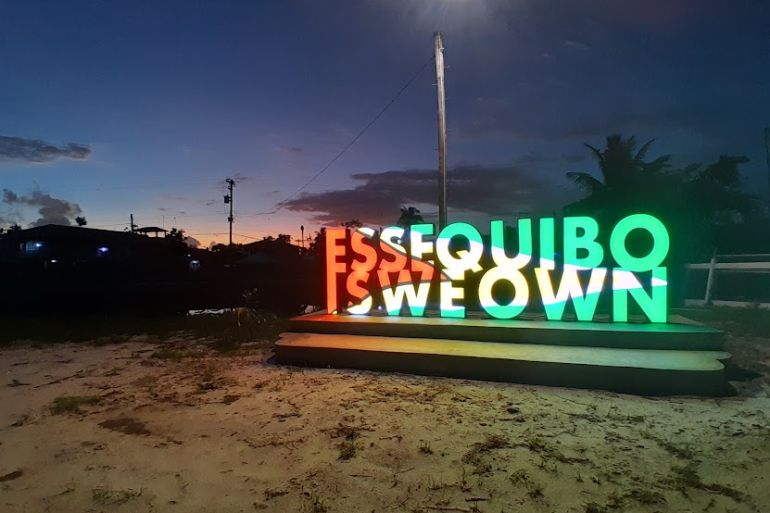
Wakapoa, Guyana – The threat had always been there, ever since Lloyd Perreira was a young child: that one day his ancestral home could be absorbed into the neighbouring country of Venezuela.
A member of the Lokono Indigenous people, Perreira considers his home Essequibo, a vast territory on the western flank of Guyana. He grew up in Wakapoa, a village composed of 16 islands on the Pomeroon River, nestled in the heart of the region.
Keep reading
list of 3 itemsThe Take: Venezuela voted to take over part of Guyana. Could it happen?
US to conduct Guyana flights amid Venezuela dispute
“Even as a small boy, I remember hearing Venezuela saying Essequibo is theirs,” Perreira said. “But I also know I live in Essequibo, and as an Indigenous person, Essequibo is ours.”
Perreira is now the toshoa, or chief, of Wakapoa. But his childhood fears returned when Venezuelan President Nicolas Maduro recently held a referendum to claim Essequibo as his country’s own.
“We were very scared when we saw the referendum,” Perreira said, as he picked a harvest of rare liberica coffee beans.
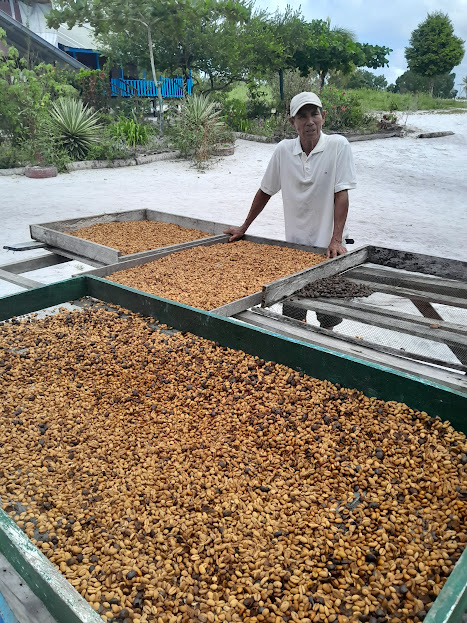
Though tensions have subsided since the December 3 referendum, the ongoing question of whether Essequibo could be annexed to Venezuela has sparked anxiety among those who call the territory home.
Nearly two-thirds of what is considered Guyana lies in Essequibo, a 159,500-square-kilometre (62,000sq mile) area lush with jungles and farms.
Along the Pomeroon River, coconuts are cultivated to make oil. Coffee shrubs blossom from riverbanks. And Indigenous groups like the Lokono harvest cassava for bread and cassareep, a syrup used to preserve food.
But the discovery of large oil deposits off its shores in 2015 reignited a decades-long territorial dispute over Essequibo. Experts estimate that more than 11 billion barrels of oil and natural gas could sit within its territory.
In recent months, Maduro has framed Venezuela’s claims on the land as a “historic battle against one of the most brutal dispossessions known in the country”.
The referendum his administration put before voters consisted of five questions, asking them to reject 19th-century arbitration that awarded Essequibo to Guyana and instead support the creation of a Venezuelan state.
That the referendum passed with 98 percent support fueled fears in Guyana that a Venezuelan takeover may be imminent.
“Guyana has never been in any war,” taxi driver Eon Smith told Al Jazeera in the town of Charity, southeast of Wakapoa. “We are not prepared for war. What will we do?”
Those concerns have also translated into lower attendance at Wakapoa’s local boarding school. Students who usually travelled for miles to attend instead stayed home in the lead-up to the referendum, their dormitory beds sitting empty.
“We have one boy in the dormitory,” teacher Veneitia Smith said, pointing to a flat concrete dwelling. “Everyone else stayed away since we heard about the Venezuela referendum.”
Guyana’s President Mohamed Irfaan Ali has sought to quell those fears, though. “Guyana will intensify precautionary measures to protect its territory,” Ali said in December.
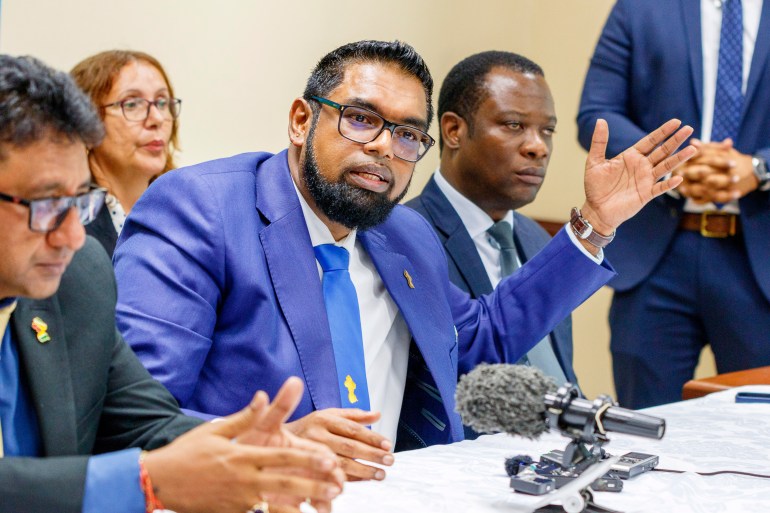
But since the referendum, Maduro has proceeded to declare Essequibo “a province” of Venezuela. He also directed Venezuela’s state-owned companies to “immediately” begin exploration for oil, gas and minerals in the region.
Some Guyanese residents, however, have organised activities to protest the referendum. Those demonstrations ranged from prayer meetings to school performances of patriotic songs and chants.
Indigenous leaders like Jean La Rose, the executive director of the Amerindian Peoples Association (APA), also called on residents to stay in their villages — and resist any urge to leave preemptively.
La Rose herself returned to her home in Santa Rosa, a village in the Moruca subregion of northwest Essequibo. In a message posted on social media, she urged Indigenous peoples “to remain in their homes and guard them” in case of annexation.
“I want to encourage other people: Stay in your homes, that is what you own. Stay on your lands, that is what you own,” she said. “That is the patrimony of your forefathers, your ancestors. Stay, guard it.”
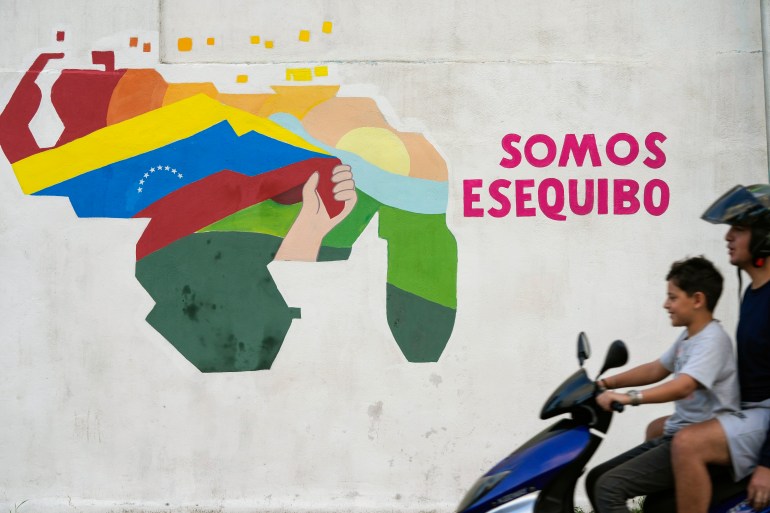
Cross-border relations have remained taut, despite a December 14 agreement between Guyana and Venezuela “not to threaten or use force” to settle claims over Essequibo.
Known as the Argyle Agreement, the deal included assurances from presidents Maduro and Ali to “remain committed to peaceful coexistence” and to resolve the dispute in accordance with international law.
The International Court of Justice continues to weigh a 2018 case brought by Guyana over the territorial dispute.
But despite talk of peace, the spectre of military tensions lingers. Late last month, the United Kingdom sent a warship to Guyana for joint training exercises, prompting Venezuela to respond with “defensive” exercises of its own.
Maduro called the ship’s presence a provocation, saying it was “practically a military threat”.
Guyana’s Foreign Minister Hugh Todd acknowledged in an interview with Al Jazeera that he has heard “concerns” over Venezuelan “aggression”.
Still, Todd said, the threat is not so great that businesses are “not willing to invest” in Guyana. He pointed to the energy producer ExxonMobil, which announced in December that it would continue to offshore oil extraction despite the tensions.
“They made it clear that Exxon is not going anywhere and they will continue to do their work here in Guyana,” Todd said.
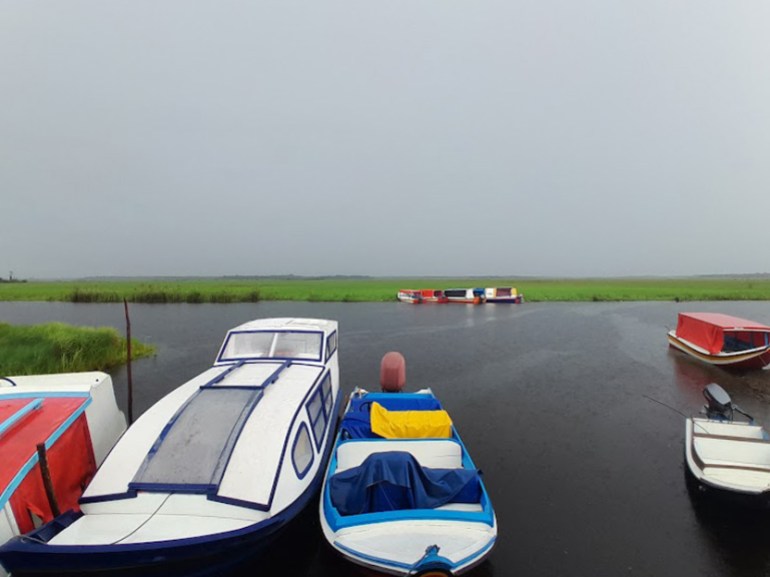
Essequibo’s oil production is one of the primary drivers behind Guyana’s economy. The World Bank has named Guyana one of the “fastest-growing economies” in the world, with double-digit growth of its gross domestic product (GDP) expected to continue in 2024.
When asked about potential risks for oil companies from the tensions, Todd maintained that Guyana’s investments are “well protected”.
“There is no reason to not want to invest, given the fact that Venezuela has ramped up its claims for the Essequibo,” he said. “We have a process and procedures undertaken to ensure that we not only protect but preserve and maintain our sovereignty and territorial integrity.”
Guyana’s Vice President Bharrat Jagdeo likewise brushed aside the possibility that tensions over Essequibo could scuttle overseas business partnerships.
“Not a single foreign investor called to say, ‘We are not coming to Guyana,’” he said in a January press conference.
“I think people are looking at Guyana in the long run. They know we have the international community on our side. They know we are approaching this border issue in a peaceful manner and through the appropriate channels.”
But compared to Guyana’s burgeoning economy, Venezuela has been in a state of economic collapse for much of the last decade. Experts credit its dire circumstances with the renewed push to claim Essequibo as its own.
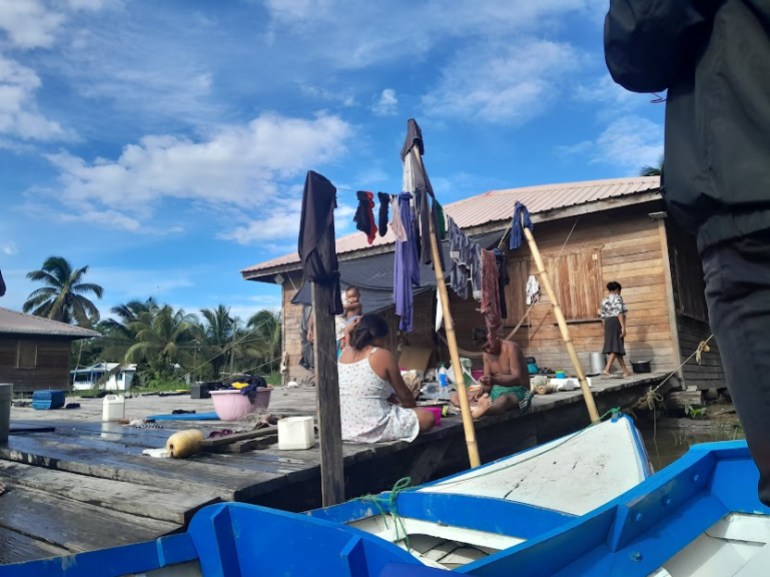
Back in the Indigenous community of Wakapoa, Toshao Perreira said he has been seeing “more numbers” of nomadic Warao people crossing from Venezuela into Guyana, as they search for basic necessities like food and clothing.
“We are worried that these people are suffering. Their numbers are rapidly increasing,” he said.
The Warao people live primarily in the marshes, rivers and waterways straddling Guyana and Venezuela. Their name loosely translates to “water people”. But Perreira sees their swelling population in Wakapoa as a sign of the instability across the border.
“I see them struggling,” Perreira continued. “Many of them said they left Venezuela because there is no food.”
Still, Perreira hopes the border feud can be resolved soon, as Guyana pursues its case before the International Court of Justice.
He told Al Jazeera he looks forward to the ruling. “I am Guyanese,” Perreira said. “Essequibo is my home: It belongs to Guyana. I will die here.”